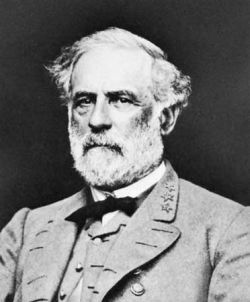 The war, although perhaps dampening Baptist growth in the United States, has by no means halted the founding of new congregations. Many established within the past year are African Baptist congregations, as their church names note. Growth is also taking place in the Mid-West and the often-new cities in the far West.
The war, although perhaps dampening Baptist growth in the United States, has by no means halted the founding of new congregations. Many established within the past year are African Baptist congregations, as their church names note. Growth is also taking place in the Mid-West and the often-new cities in the far West.
Among churches started in the Mid-West today is the Second Baptist Church of Ottawa, Kansas. The congregation adopts the 1833 New Hampshire Baptist Confession, a statement of faith that articulates a much milder form of Calvinism than some earlier Baptist confessions. Growing ever more popular among Baptists in America, the New Hampshire Confession is indicative of a broad, gradual Baptist movement away from historical Calvinism. Although many Southern Baptists, yet strongly influenced by the Old School Presbyterian educated scholars of the Southern Baptist Theological Seminary in Greenville, South Carolina (the only Southern Baptist seminary to date) remain committed to strict Calvinism, by the 1890s Calvinistic theology largely fades away within the churches of the Southern Baptist Convention, replaced by Arminian-influenced views of the free will of man.
A First Baptist Church in Ottawa, an Indian congregation, already exists, hence the “second” nomenclature. The name, however, is only temporary. In a rather unusual twist, the First Baptist Church falters and then folds in the 1890s, at which point the Second Baptist congregation votes to assume the First Baptist name.
Nearly due west on this same day, the First Baptist Church of Denver is formally organized with nine members. American Baptist missionary Walter M. Potter and wife Lucy, recently arrived from the East, had been instrumental in initiating, in December 1863, a gathering that leads to today’s ceremonies.
While the new Baptist congregations in Kansas and Colorado look forward to a bright future, Confederate Gen. Robert E. Lee is concerned about the future of the Confederate nation, of which he is the chief protector. Utilizing observation points atop the mountains of northern Virginia, Lee has for several weeks watched Union forces from afar. The enemies’ numbers have been steadily growing in their camps, and today Lee notes a bustle of activity. Discerning that the federals are preparing to march forth in preparation for an attack on his Army of Northern Virginia, Lee surmises–correctly as it turns out–where the Union forces will cross the Rapidan River. Even as Lee reports his observations and predictions to Confederate President Jefferson Davis on the morrow, the Union Army of the Potomac begins moving out of camp under the cover of darkness.
And so the deadly game is on again, as the war is about to resume in all its fullness. Leading an inferior force, Lee will need to again display his strategic genius in the weeks and months to come. The general, the fate of a nation borne upon his shoulders, can afford little margin of error in his guesstimates of the intentions of the enemy. Should the coming battles of spring and summer not go well for the South, the Confederacy will likely not be able to recover.
Sources: “Our History,” First Baptist Church of Ottawa (link); Doug Carder, “First Baptist Church Celebrating 150 Years,” Ottawa Herald, May 1, 2014 (link); New Hampshire Baptist Confession, 1833 (link); C. Douglas Weaver, In Search of the New Testament Church: The Baptist Story, Macon, Ga.: Mercer University Press, 2008, p. 98 (link); “Baptist Church in Colorado,” Colorado Genealogy (link); Noah Andre Trudeau, “Battle of the Wilderness,” Civil War Trust (link)


